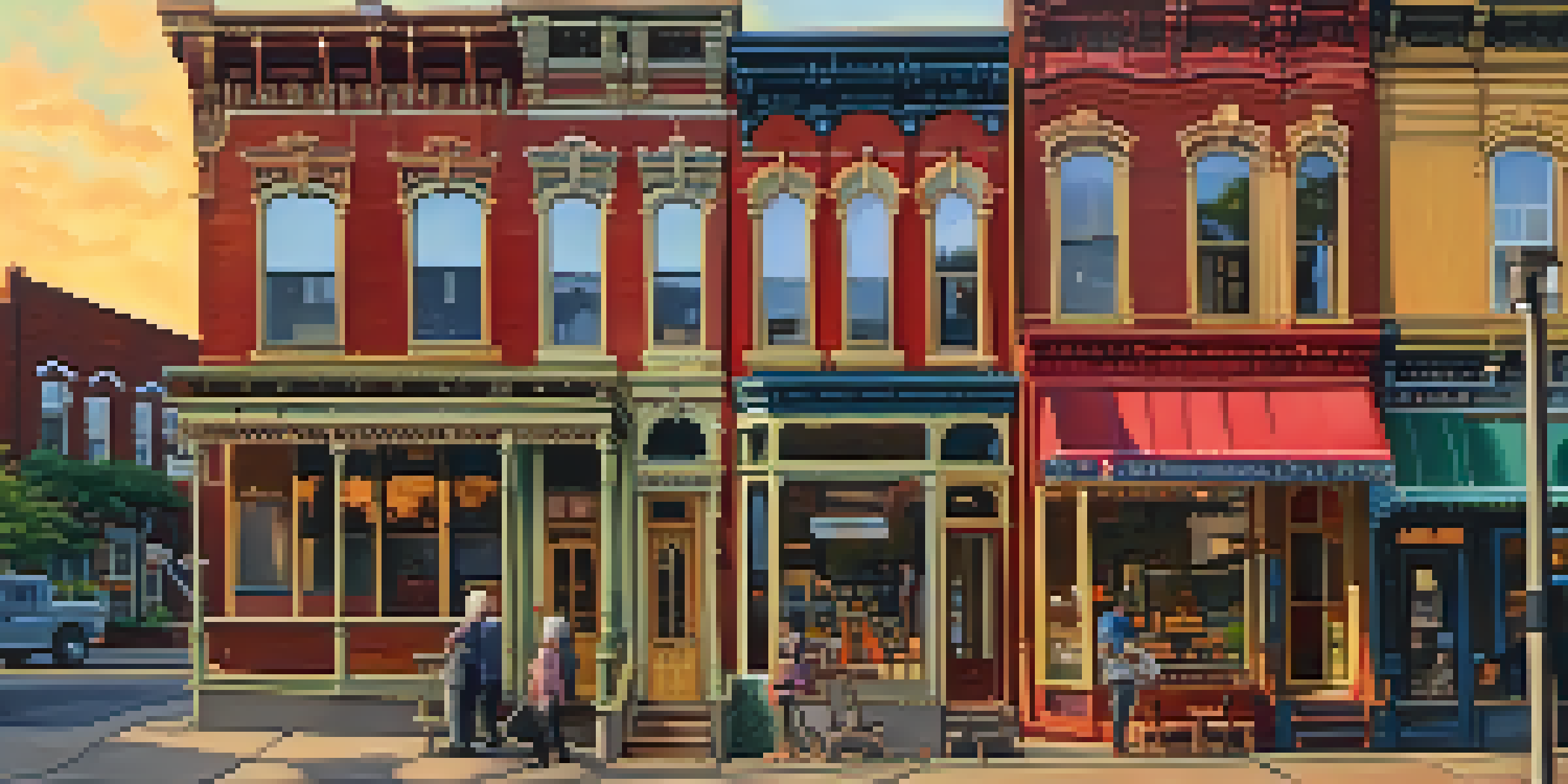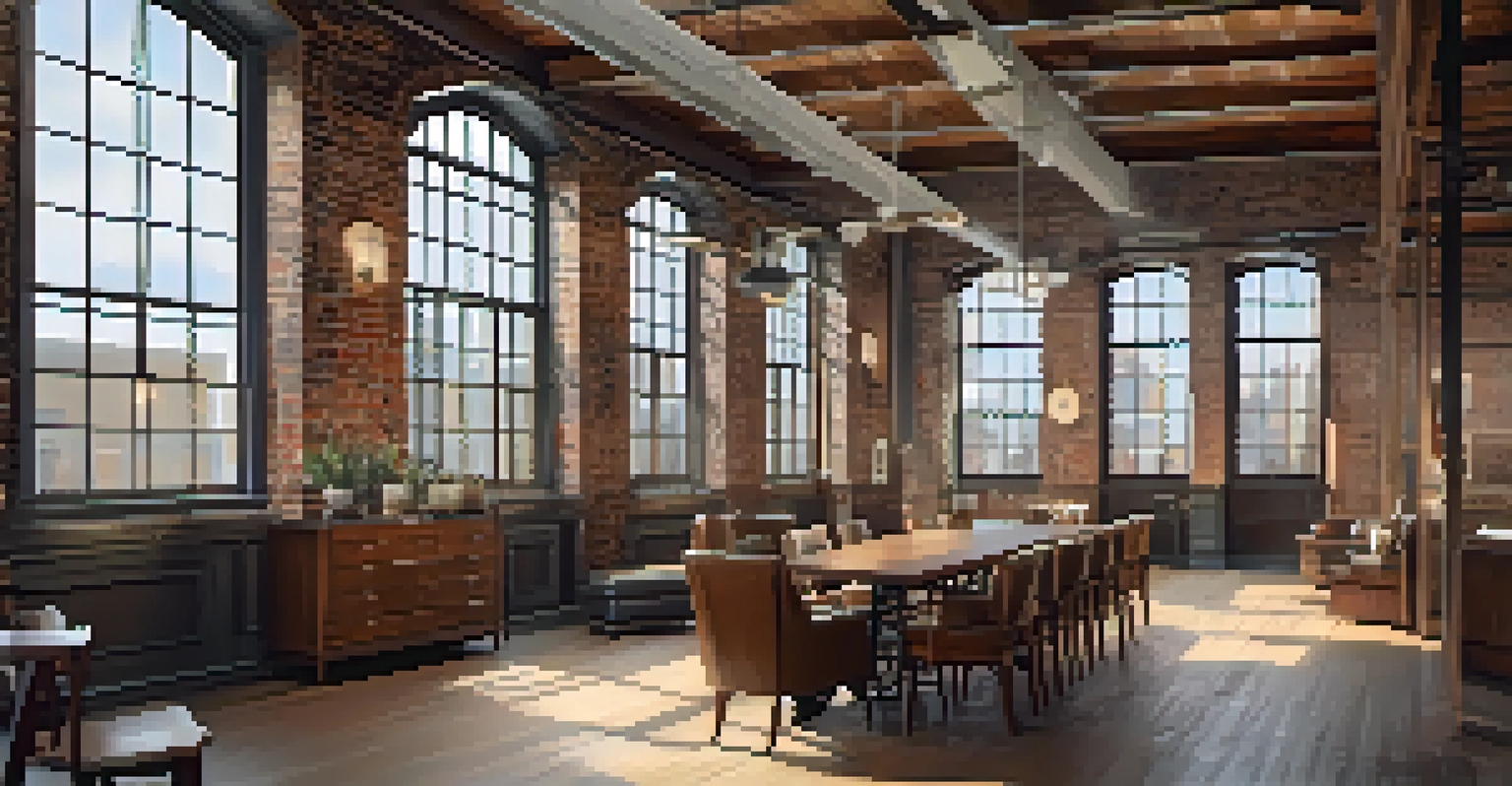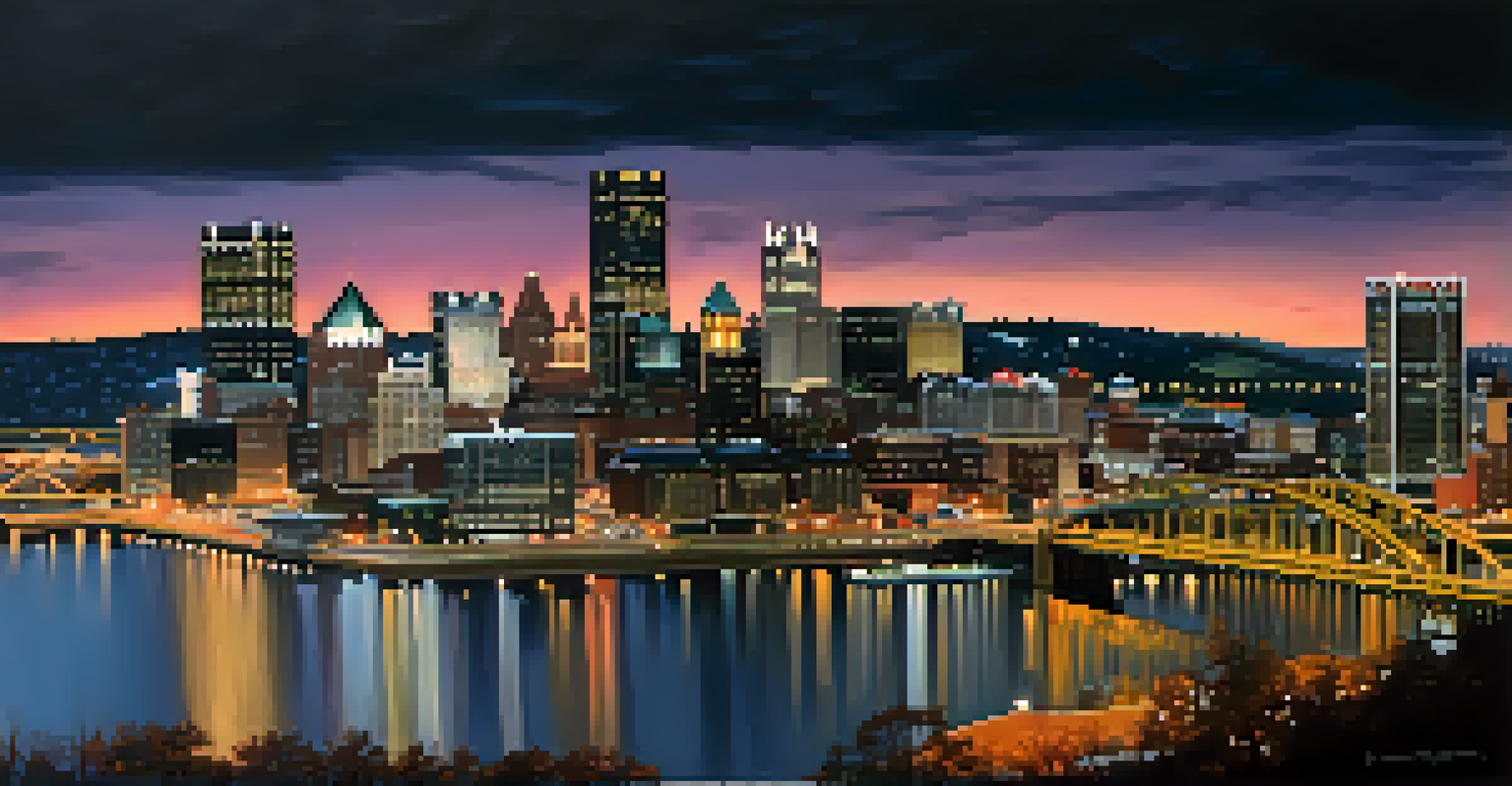The Impact of Historic Preservation on Pittsburgh's Architecture

Understanding Historic Preservation in Pittsburgh's Context
Historic preservation is all about maintaining and protecting buildings that have historical significance. In Pittsburgh, this means honoring the city's rich industrial past while looking to the future. By preserving these structures, we not only keep our history alive but also enhance community identity and pride.
Preservation is a form of democracy. It’s the last frontier of civil rights.
In a city known for its unique neighborhoods and diverse architecture, preservation efforts help retain the character of areas like Lawrenceville and the Strip District. These buildings tell stories of different eras, showcasing the evolution of architecture from Victorian to modern styles. Understanding this context helps us appreciate why preservation matters.
Moreover, historic preservation isn't just a nod to nostalgia; it plays a crucial role in sustainable development. By reusing and repurposing buildings, we reduce waste and the demand for new materials, making it an environmentally friendly choice that benefits both the community and the planet.
The Role of Local Organizations in Preservation Efforts
Organizations like the Pittsburgh History & Landmarks Foundation have been pivotal in advocating for preservation. They work tirelessly to identify, protect, and promote historic sites throughout the city. Their efforts help raise awareness about the importance of preserving Pittsburgh's architectural heritage.

These organizations often conduct research, host events, and provide educational resources to the public, fostering a greater appreciation for local history. By engaging the community, they encourage residents to take an active role in preservation initiatives. This grassroots involvement is essential for sustaining these efforts over time.
Preservation Enhances Community Pride
By maintaining historic buildings, Pittsburgh fosters a sense of identity and pride among residents, connecting them to their rich cultural heritage.
Additionally, local organizations often collaborate with government agencies to secure funding and support for preservation projects. This partnership ensures that vital historical sites receive the attention and resources they need to thrive, ultimately enriching the city's cultural landscape.
Economic Benefits of Historic Preservation
Preserving historic buildings can significantly boost local economies. When old structures are revitalized, they attract new businesses, tourism, and investment. In Pittsburgh, areas like the South Side and Downtown have benefited from such initiatives, seeing an influx of shops, restaurants, and entertainment options.
The past is not dead; it is not even past.
Moreover, preserved buildings often command higher property values. Homebuyers and investors are drawn to neighborhoods rich in history and character, leading to increased demand and economic growth. This trend not only benefits property owners but also generates tax revenue for the city.
The adaptive reuse of historic buildings also creates jobs in construction, tourism, and hospitality. By focusing on preservation, Pittsburgh can cultivate a dynamic economy that honors its past while paving the way for future development.
Pittsburgh's Architectural Diversity and Its Significance
Pittsburgh is a tapestry of architectural styles, from Gothic Revival churches to mid-century modern skyscrapers. This diversity is a direct result of its historical context, reflecting the influences of various immigrant communities and industrial growth. Each building is a piece of the city's story, contributing to its unique character.
Preserving this architectural variety is crucial for maintaining the city's cultural identity. When we save a building, we save a fragment of Pittsburgh's narrative, allowing future generations to connect with their heritage. It fosters a sense of belonging that is vital to community cohesion.
Economic Growth Through Preservation
Revitalizing historic structures attracts businesses and tourism, boosting local economies and increasing property values in neighborhoods.
Furthermore, the architectural diversity attracts visitors and residents alike, eager to explore the city's rich history. This interest in Pittsburgh's built environment can lead to increased tourism, as people seek to experience the charm and character that these historic structures offer.
Challenges Faced in Preservation Efforts
Despite the many benefits of historic preservation, challenges abound. One major hurdle is the financial aspect; maintaining and restoring older buildings can be costly. Property owners and organizations often struggle to find funding or incentives to undertake such projects.
Additionally, there can be tensions between development and preservation. As Pittsburgh continues to grow, the pressure to replace older buildings with new construction can lead to conflicts. Advocates for preservation must navigate these complex dynamics to ensure that the city's history is not sacrificed for immediate economic gain.
Public awareness and support are also essential in overcoming these challenges. When communities understand the value of their historic sites, they are more likely to advocate for their preservation. Educating residents about the significance of these buildings can help foster a culture of appreciation and commitment.
Community Engagement in Preservation Initiatives
Community engagement is at the heart of successful preservation efforts. Local residents often possess invaluable knowledge about their neighborhoods' histories and architectural gems. By involving them in the preservation process, we can tap into their passion and insights, ensuring that efforts reflect the community's values.
Events like heritage walks and restoration workshops can help educate residents about their local architecture and the importance of preservation. These initiatives foster a sense of ownership and pride, encouraging individuals to advocate for the protection of their neighborhoods' historic sites.
Community Engagement is Essential
Involving local residents in preservation initiatives ensures that efforts reflect community values and fosters a strong advocacy network.
Moreover, when communities come together to support preservation, they create strong networks of advocacy. These coalitions can effectively lobby for policies that protect historic sites and secure funding for restoration projects, making a lasting impact on the city's architectural landscape.
The Future of Historic Preservation in Pittsburgh
As Pittsburgh continues to evolve, the future of historic preservation remains bright yet challenging. With ongoing development projects and changing demographics, it is essential to strike a balance between growth and the preservation of our architectural heritage. This requires a commitment from both the community and local government.
Innovative approaches, such as integrating modern design with historic buildings, offer exciting possibilities. By embracing contemporary architecture that respects and complements the past, Pittsburgh can create a vibrant urban environment that honors its history while looking to the future.

Ultimately, the success of preservation efforts hinges on a collective vision. By fostering collaboration among residents, organizations, and city leaders, Pittsburgh can ensure that its historic sites remain an integral part of the city's identity for generations to come.